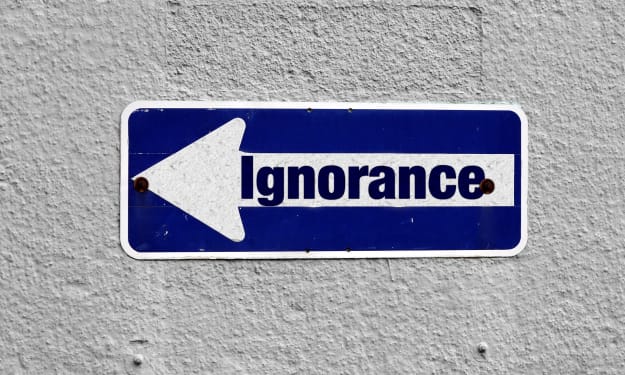How Ordinary Thoughts Become Story Ideas
Don't extinguish the spark

Without inspiration, the best powers of the mind remain dormant. There is a fuel in us that needs to be ignited with sparks. ~Johann Gottfried Herder
You’re probably wondering what the cover photo has to do with formulating brilliant writing ideas. Never fear. There is a thread of logic behind my madness.
I originally created the fabric mosaic with a zillion bits of fabric of various shapes, sizes, and colors. When completed, it immediately struck me as the perfect image of how my thought process works, both as an artist and a writer. We’ll talk a little more about that later in this article.
Where to find the sparks
When I thought of each of those bits of fabric as emotions, memories, and experiences, I realized how flooded my life is with idea-creating material. Our lives overflow with elements of life, some connected, some disjointed. Much of them are inherent, stored deep within. While many more are external yet in constant orbit around us. The reason they’re elusive is that they’re ordinary, so we tend to take them for granted or ignore them altogether.
How to ignite the spark
I find the harder I consciously try to make a spark appear, the less apt I am to succeed. It’s when I relax and live my life naturally that the energy starts working for me.
However, I’ve developed a particular mindset that aids the process. That mindset is one of insatiable curiosity. There are three questions that are perpetually circling in my mind.
- What if?
- If I were…then what?
- Why?
When one or more of these questions is applied to anything I see, hear, smell, taste, or feel, the sparks begin to fly. You can put this strategy to work for yourself by making it your own in the following ways.
Learn to keep it simple
Start with the ordinary events in your daily life. Here are three examples.
- What if I changed my toothpaste?
- If I were wealthy would I still rise at 5 AM to write?
- Why don’t I eat pizza for breakfast since it’s one of my favorite foods?
Can you find the writing ideas those three questions spark? Consider my examples.
Question (1)
- How and who invented toothpaste?
- Do all cultures use toothpaste? If not, what do other cultures use?
- How to choose a toothpaste your kids will like.
Question (2)
- What motivates a writer to write?
- How to set the best time to write.
- Does the abundance or lack of money dictate my desire to write?
Question (3)
- Why are certain foods specific to certain meals and how does culture make a difference?
- What are the health benefits of eating pizza for breakfast as opposed to an evening snack?
- Would I allow my child to eat pizza for breakfast?
By applying three questions to three ordinary events in my daily life, I generated writing ideas from 9 different angles. Where did they come from? The simple things I do every morning. I get up. I brush my teeth. I choose what I’ll eat for breakfast.
WOW! Who knew there were so many wonderful writing ideas hidden in that routine?
Take notes
Throughout a normal day, I jot down short notes pinpointing specific questions relative to the moment.
This morning, I changed my routine of where I drink my first cup of coffee — usually at my computer desk. Instead, I took advantage of a beautiful morning and sat on my patio, which is covered by a Wisteria arbor. As I looked up through the green Wisteria vine at the beauty of the baby-blue sky overhead, I allowed my question process to kick in.
What if the sky were green and the Wisteria vine were blue? Would it matter, and why?
From that came a whole list of new ideas on color theory, the emotional impact of color, why humans are sensitive to color and have color preferences, etc.
The point is this. There is no such thing as WRITER’S BLOCK! There are only ideas that writers ignore…
Tap into your feelings — let your emotions free
When we reach deep where our emotions live, we tap into a whole new universe of questions leading to ideas from a personal perspective. And don’t forget, you’re not an alien. If you can feel it, others will also, and they may be drawn to read what you write.
Keep it up
Practice this concept until it becomes second-nature to you. Create a title for each brilliant idea you generate and put it in your draft folder. In time, you’ll have more ideas than you can write. You might even share a few.
Always be willing to adapt an original spark to fit your current needs. After all, you are the owner of your own thoughts, right?
The cover photo
After finishing the piece of fabric art, I photographed it and then did some Photoshop manipulations to blur the elements, allowing just a few to take on recognizable shapes.
This illustrates how story ideas are often hidden in a bigger scenario. It also demonstrates that story ideas are multifaceted. I’ve always thought that since we live in a three-dimensional world, I ought to be able to find at least three angles on any subject from which I could write.
Takeaway
There is no such thing as WRITER’S BLOCK! There are only ideas that writers ignore…
About the Creator
Lynda Coker
Grab a chair, turn a page, and read a while with me. I promise to tap lightly on my keyboard so we both can stay immersed in our world of words.






Comments
There are no comments for this story
Be the first to respond and start the conversation.